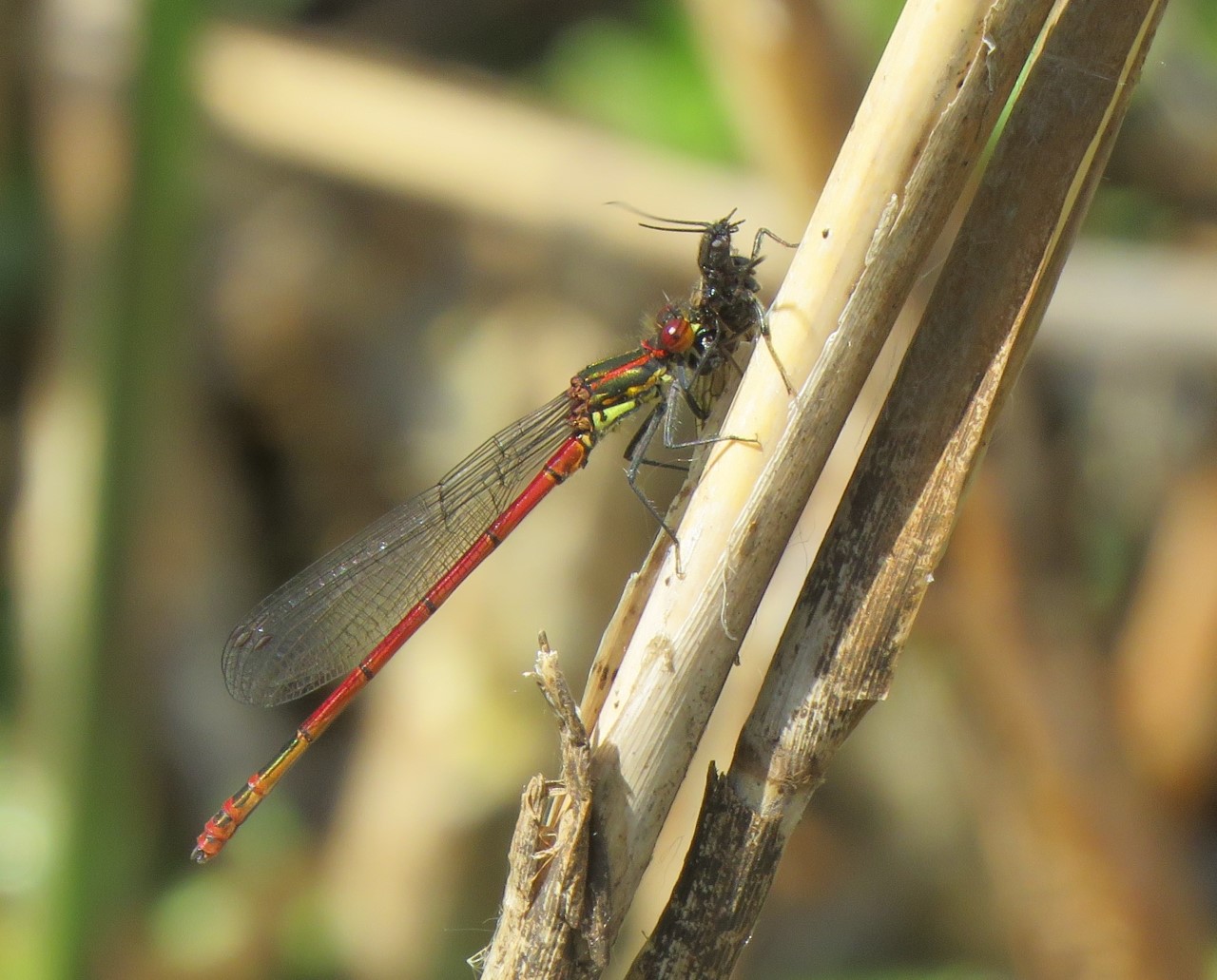Discover five insects to spot this spring as David Raffle introduces some of the intriguing species you could encounter close to home

Dark-edged Bee-fly
One of the most iconic spring insects, the Dark-edged Bee-fly is a distinctive furry fly that is on the wing from March to May. It resembles a bumblebee in its appearance and darting flight but can be identified by its long proboscis and single pair of wings which are held at the side of the body at rest.
They can be found in a variety of habitats, including gardens, where you may see them hovering over solitary bee nests. Females cover their eggs in dust for camouflage and extra weight, before flicking them into the nests of unsuspecting mining bees.

Red Mason Bee
The Red Mason Bee is a red and brown solitary bee often found nesting in garden bee hotels. The female has a characteristic pair of facial horns, which are used to shape mud nest cells. The female provisions each cell with pollen, collected on the underside of the abdomen, before laying an egg in each cell.
Males emerge first and can often be seen flying around bee hotels at this time of year waiting for the first females to emerge. We would love to hear about your records of this target species for the North East Bee Hunt.

Orange Tip
The Orange-tip is a classic spring butterfly, but did you know that only the males have the distinctive orange tip to the forewing that give this species its name. The females have black tips like many of the other white butterflies, but both sexes have a characteristic green marbled pattern on the underside of the hindwing.
Look out for this butterfly in gardens and hedgerows from late April, especially around Cuckooflower and Garlic Mustard which are its larval foodplant.

14-spot Ladybird
The 14-spot Ladybird is yellow with rectangular black spots which are commonly fused together to form a shape resembling an anchor. It becomes active later in the year than many of the other ladybirds, so it is one to look out for in the next few weeks.
A good place to search for this distinctive black and yellow ladybird is low herbaceous vegetation, where it feeds on mildew. It is one of the nine target species for the North East Ladybird Spot, but the only one yet to be recorded, so we would love to receive some records of this species.

Large Red Damselfly
The Large Red Damselfly is usually the earliest of the dragonflies and damselflies to emerge. Its red colouration is distinctive among the North East’s damselflies, as the similar Small Red Damselfly is restricted to southern England and west Wales.
It can be found in a wide range of wetland habitats but tends to avoid fast-flowing water. The males are mostly red, but the females come in three colour forms ranging from mostly red to mostly black.